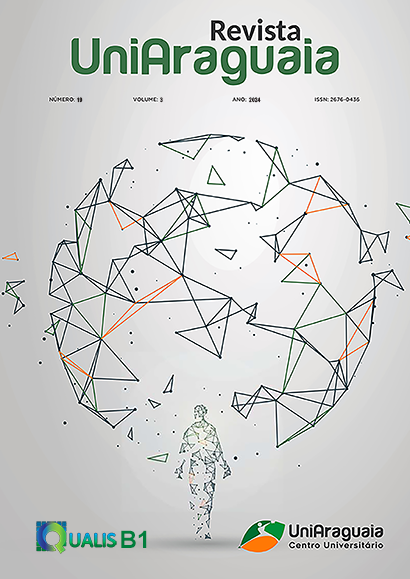PRODUCTIVITY AND NUTRITIVE VALUE OF UROCHLOA BRIZANTHA UNDER WATER SATURATION LEVELS
Abstract
Water availability in the soil can alter the productive and qualitative characteristics of pasture, but the magnitude of the response can be different between cultivars. The aim was to assess the productivity and quality of Urochloa brizantha cultivars subjected to different water saturation levels. The experimental design was in randomized blocks in a 4x5 factorial scheme, with four cultivars, Marandu, Xaraés, Piatã, and Paiaguás, and five levels of water saturation: 20, 40, 60, 80, and 100% of the maximum water retention capacity in the soil, with four replications. The grasses were sown directly into pots. After 30 days, the uniformization cut was carried out, and the water saturation levels were applied. The plant material was collected 40 days after the uniformization cut. The aerial part's dry mass and the grasses' bromatological characteristics were assessed. The data was submitted to analysis of variance and regression analysis for the water saturation levels and Tukey's test for the cultivars at 5% probability. The cultivars Marandu and Xaraés obtained the highest dry mass of the aerial part with average yields of 17.90 and 17.04 g pot-1, respectively. The maximum contents were obtained at levels of water saturation of 28.21%, 43.09%, 43.44%, and 45.06% with 11.14%, 9.21, 9.84%, and 8.59% crude protein, respectively, for the Marandu, Xaraés, Piatã, and Paiaguás cultivars. Higher water saturation levels lead to a decrease in the crude protein content and an increase in the NDF and ADF contents.
Downloads
Published
Issue
Section
License

This work is licensed under a Creative Commons Attribution 4.0 International License.
The copyright of the published articles will be transferred to the Uniaaraguaia Magazine, allowing its subsequent reproduction as transcription and with due citation of source. In the event of acceptance and before the publication of the article, the plaintiff (s) shall write a statement formally transferring copyright to the magazine.
The author may also print and distribute copies of his article, provided that he mentions that the rights belong to the Uniaaraguaia Magazine.
Author rights include the right to reproduce in full or partly by any means, distribute this article, including figures and photographs.
By submitting originals to the Uniaaraguaia magazine, the author or authors express agreement with the following terms:
a) Authors maintain copyright and grant Uniaraguaia magazine the right of first publication, with the work simultaneously licensed under the Creative Commons Attribution license that allows the sharing of work with recognition of the authorship and initial publication in this magazine.
b) Authors are authorized to assume additional contracts separately, for non-expiration distribution of the work version published in this magazine (eg publish in institutional repository or as book chapter), with recognition of authorship and initial publication in this journal.
c) Authors are allowed and are encouraged to publish and distribute their work online (eg in institutional repositories or on their personal page) to any point before or during the editorial process, as this can generate productive changes as well as increase the impact and citation of published work.

